An African safari is synonymous with open plains, great herds of zebra, wildebeest, and buffalo, but also African Savanna birds.
From the mighty ostrich to the small bee-eater, these birds form an integral part of the African savannah and their respective ecosystems.
Even though human encroachment on these birds’ habitats is putting added pressure on their survival, they are proving in most cases resilient and adaptable.
For those going on a general African safari to avid bird watchers, the African Savannah is a treasure chest of avian diversity, and below are just 16 of the most common birds to spot in the savanna.
Updated 28/11/23
A very common bird in the Savanna: The OSTRICH
Standing at about 2.5 m (8 feet) and weighing up to 160 kg ( 300 pounds), the ostrich is the heaviest and tallest bird on earth and for sure the ruler amongst the African savanna birds.
Although they were once found in different places around the world, today these birds are only found in Africa.
These flightless birds have over time evolved to have long and powerful legs which can propel the ostrich to speeds of about 70 km/h, making them the fastest terrestrial birds.
One word of advice: don’t feed the ostriches lol!
The powerful legs also serve as powerful weapons against predators such as lions.
The males have black and white plumage while the females have dull brown plumage.
When their females or territories are threatened the male ostrich will produce a deep resonating Boom, that travels through the Savannah, and that sounds like a lion’s roar in some instances.
These birds can be found throughout Africa, in the Eastern and Southern regions of the continent. They prefer open lush grasslands, to desert or semi-arid regions.
A tiny bird of the African Savanna: The MALACHITE KINGFISHER
At about 13 cm (6), this beautiful but little bird can be hard to spot, but once you see one, it is a wonder to behold.
The chest and belly feathers are a combination of white and reddish brown, while the back is mainly blue.
On the top of their heads is a mixture of black, green and blue feathers that glisten in the sun.
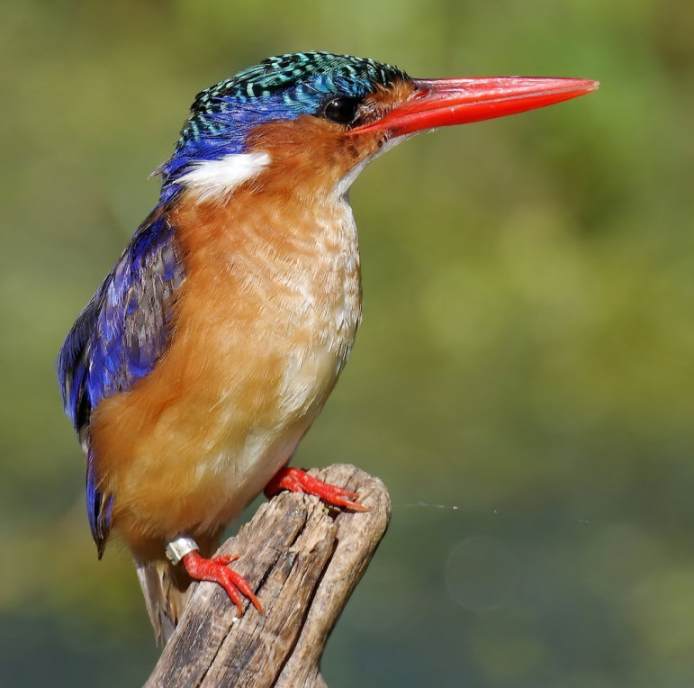
They are solitary birds only coming together during the mating season. Despite their name, these birds’ diets aren’t made of fish alone, but anything small enough.
Their diets include fish, insects, frogs, lizards, and even crabs.
They are found in aquatic vegetation and reeds near slow-moving streams or ponds.
The malachite kingfisher can be found throughout Sub-Saharan Africa except for the arid areas in Botswana, Namibia, Kenya, and Somalia.
A colorful bird in the savanna: The LILAC-BREASTED ROLLER
The lilac-breasted Roller is another stunning one of the African savanna birds known for its breathtaking aerobatic displays during the mating season.
It is a large-headed chunky bird with a lilac-colored breast, a spring-green crown, and rusty cheeks. It is also the national bird of Kenya.
They make their nests in natural holes such as in trees, with the female laying two to four eggs, and which are incubated by both parents.
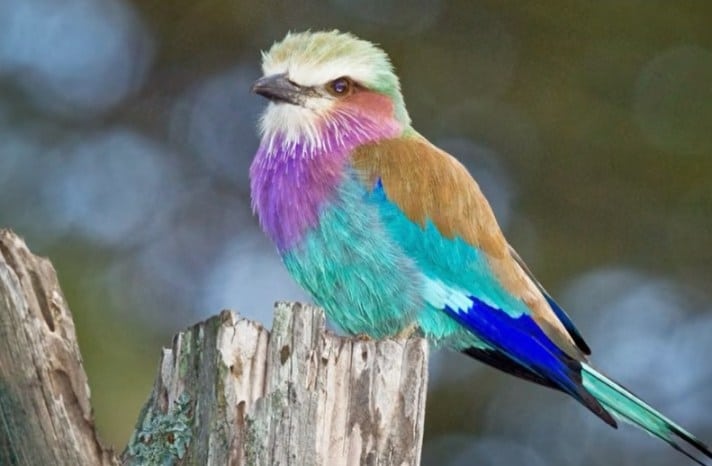
Its distribution ranges from East Africa to Southern Africa. They live in open savannah habitats with scattered shrubs and trees, but will be found less often in riverine areas and light forests.
The lilac-breasted roller is found in Eritrea, Ethiopia, Somalia, Kenya, Uganda, Tanzania, Botswana, Zimbabwe, and Namibia.
The YELLOW-BILLED HORNBILL
Across Africa, and amongst the African Savanna birds, there are two species of yellow-billed hornbill: the Southern yellow-billed hornbill, and the eastern yellow-billed hornbill.
These birds have a peculiar nickname; ‘flying bananas’ which comes from their large yellow bills.
The birds have a grey neck, white belly, black back with white stripes and spots and the skin around the eyes and in the malar stripe is vivid red.
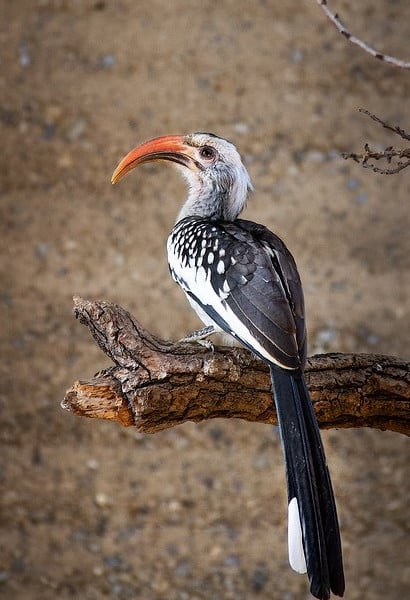
The difference between the two species is the blackish skin around the eyes. Their diet mainly consists of insects, seeds, spiders, and scorpions.
During the dry seasons, their main source of food is ants and termites.
These birds like broad-leafed woodlands and dry thorn fields. The Eastern Yellow Billed hornbill is found in Kenya, Uganda, Tanzania, Sudan, Somalia, and Ethiopia.
The southern yellow-billed hornbill is commonly found in South Africa.
A model amongst the Savanna birds: The FLAMINGO
Flamingos are beautiful with their striking pink coloration and long reed-like legs.
The species you’ll find in Africa include the lesser flamingo and the greater flamingo, and you will find them around wet habitats.
The lesser flamingo has pink legs, bills, and plumage, and is smaller compared to other flamingo species.
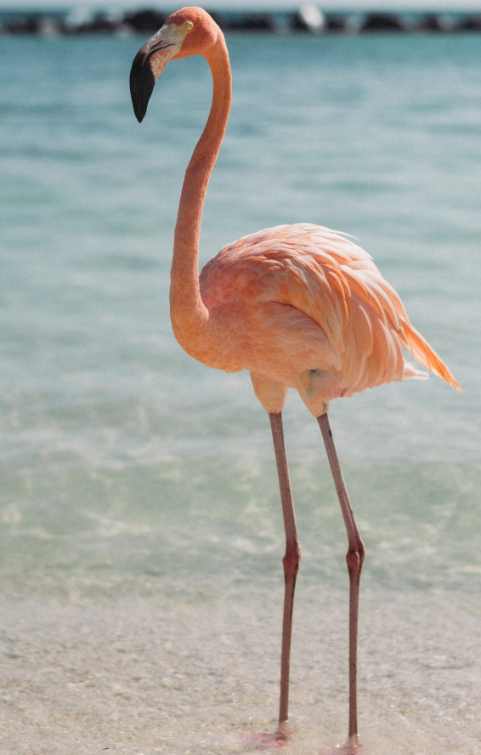
They can be found in Eastern and Southern Africa, with the best places to find them is the Rift Valley lakes, Botswana, and Namibia and to lesser extents, Ethiopia and Sudan.
The greater flamingo; the largest of all the species has pale pink plumage, long and lean necks, and bills that have a downward curve that is black-tipped.
The greater flamingo will be found in areas that are warmer than what the lesser flamingo prefers and can be found in Botswana, Namibia, Tanzania, and Kenya.
A large Savanna bird: The SADDLE-BILLED STORK
The Saddle-billed stork is a large bird reaching heights of up to 150 cm ( 4ft 11 in) and a wingspan length of up to 2.7 m (8 ft 10 in) with spectacular plumage.
The body feathers are black and white in color with the bill having yellow, black and red colors.
The females have yellow eyes while the males have red-brown eyes.
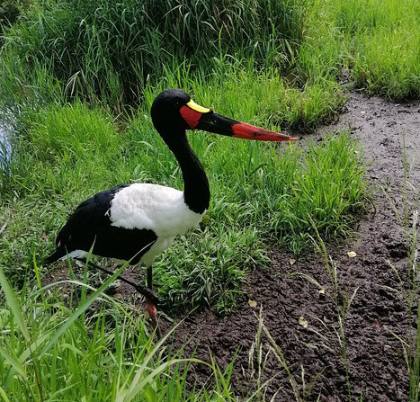
Their diets consist of frogs, insects, birds, and fish, and their favorite fish is the catfish.
When flying, they have their necks outstretched and their large heavy bills drooping below belly level, giving them an unusual appearance.
These birds prefer protected areas with a high amount of open waters, forested wetlands, and floodplains in tropical lowlands and thus belong to the African Savanna birds.
They are spread throughout sub-Saharan Africa from Chad, Cote d’Ivoire, Senegal, Gambia, Kenya, Ethiopia, and Sudan to South Africa.
A peculiar looking savanna bird: The MARABOU STORK
The Marabou Stork is an unmistakable bird with its bare neck and head, white underparts, black back, legs and wings, a neck ruff, pick throat gular, and a large bill.
Due to its looks, and its scavenging habits it is considered an ugly bird, and due to its weight, it has hollow toe and leg bones to reduce weight during flight.
During times of high heat, it defecates on its feet as a way of regulating body temperature.
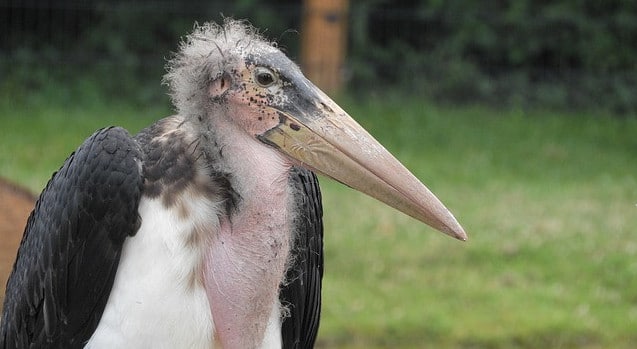
The marabou is a scavenger, but its diet also includes reptiles, frogs, small mammals, insects, and eggs.
The bare head and neck are an adaptation to help when it is feeding on carcasses, to reduce how dirty its feathers get.
The bird is found throughout Sub-Saharan Africa and can be found in both arid and wet habitats. These birds are also found around human settlements, particularly near landfills.
The heaviest bird in the savanna: The KORI BUSTARD
Native to Africa, the Kori bustard is the heaviest bird known to take flight. The bird has a black head crest, yellow legs and grey body plumage.
They are omnivores and eat what they can find and are mostly terrestrial, though they are very wary and watchful, running at the first sign of danger.
Males which are typically 2-3 times heavier than females can weigh up to 18 kg (40 lb)
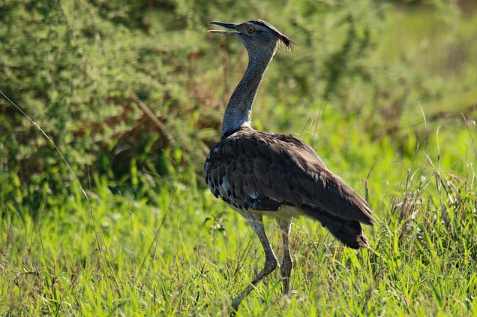
Their habitats include open grassy areas, plains, plateaus, semi-arid, lightly wooded savannah and Highveld scrub.
The Kori bustard can be found in North Eastern to South Africa, in countries such as South Sudan, Ethiopia, Kenya, Somalia, Uganda, Tanzania, South Africa, Mozambique, Zambia, Botswana, Namibia, and Angola.
The most spectacular savanna bird: The GREY-CROWNED CRANE
The Grey-crowned crane is a spectacular and majestic bird with a black and white face, a crown of golden yellow plumes, and white wings with gold and brown feathers.
The birds get their name from their yellow plume tipped with black.
It is on the Uganda coat of arms, and the country’s national bird.
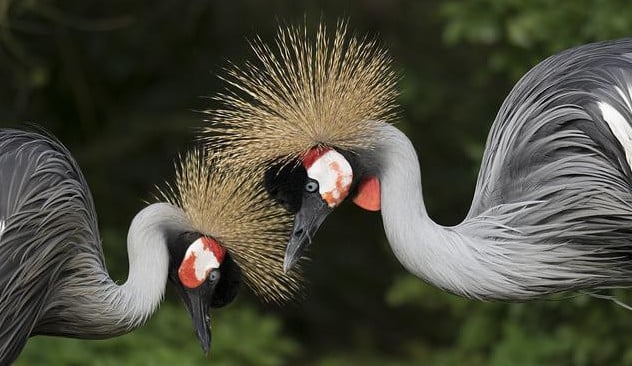
Due to their beauty and splendor, they are considered a status symbol and are trafficked and sold into captivity which has put them on the endangered list.
The grey-crowned crane is an omnivore with a diverse diet ranging from seeds, plants, frogs, small fish, insects, snakes, and worms.
Their habitats include open savannah, but when it’s nesting season they generally prefer wetter areas.
Their range stretches from Kenya, Uganda, Eastern Democratic Republic of Congo, and Zimbabwe, to Southeastern South Africa.
A large bird of prey in the African Savanna=The SECRETARY BIRD
The secretary bird is a large bird of prey with long thin legs adapted more for walking than carrying prey.
Together with the Caracas, these birds are known to actively hunt their prey on foot, with their long legs keeping their bodies well above the grass giving them a spectacular viewpoint of their prey.
At the back of their heads, they have long dark grey quills, long gray tail and wing feathers, and black feathers that only go halfway down the legs.
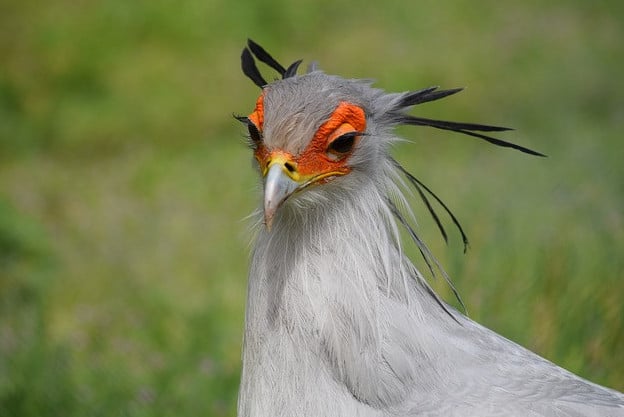
Their diets include reptiles, insects, small mammals, and birds. They have a particular liking for snakes, having developed ingenious ways of hunting them.
Although they are mostly terrestrial hunters, they can fly really well.
The secretary bird is native to Africa, and its habitat ranges from just south of the Sahara Desert, Somalia, and Senegal to South Africa.
And we saw it in Pongola game reserve as well, which is in Kwazulu Natal, South Africa.
The LAPPET-FACED VULTURE
The lappet-faced vulture is a massive bird with a square bullish head, blue-yellow beak, and lappets ( loose wrinkled skin) on the face.
Like other vultures, the head is devoid of feathers and can range from pink to red, the back and upper body feathers are black to grey with white legs and underside.
It is a scavenging bird mainly spotting carcasses by sight. Of the African vultures, the lappet-faced vulture is the most aggressive and powerful often chasing others away from a carcass if they decide to.
They are solitary birds often converging en masse at watering holes or at a carcass.
Their habitats include dry savannah, open mountain sides, and arid and semi-arid regions with scattered trees.
It can be found throughout Africa, though its numbers are declining.
It breeds in countries ranging from Senegal, Burkina Faso, Chad, Niger, Egypt, Ethiopia, Somalia, Sudan, Kenya, Tanzania, DRC, Malawi, Mozambique, and Zimbabwe to South Africa.
The SOUTHERN GROUND HORNBILL
One of two ground hornbill species only found in Africa, the Southern Ground Hornbill is the largest hornbill species in the world.
Their plumage is black with red patches on the face, white wing tips, (a distinguishing feature), and a black beak. Females have blue patches on the face, instead of red.
These birds are carnivorous and their diet will include snakes, lizards, toads, tortoises, small mammals, and insects, but they will occasionally eat fruits.
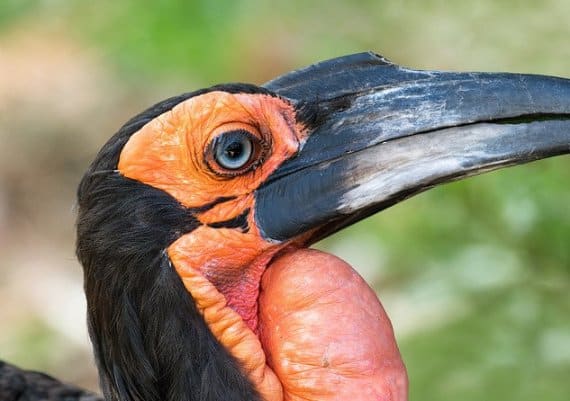
The bird prefers open grasslands, savannahs, and woodlands and generally prefers a tree to build a nest and roost in.
Their distribution ranges from Kenya, Burundi, Northern Namibia, Angola, and South Africa.
The CROWNED PLOVER
A noisy and highly adaptable bird, the crowned plover is also known as the crowned lapwing.
Its most distinguishing feature is a white halo on the crown. Its plumage consists of white and black feathers with a black crown and a white halo.
Their diet is mainly made up of insects with a strong preference for termites.
Have a listen to the call of the crowned plover in the video below:
Their preferred habitats include dry grassland and will avoid mountainous areas.
When conditions are unfavorable they migrate to other areas. In Africa, they can be found from the red-sea region, Somalia, to Southern Africa.
A funny savanna bird=The HELMETED GUINEA FOWL
The helmeted guinea fowl gets its name from a dull red-yellow bony knob that sits on top of its head like a helmet.
This bird has a bright blue bare neck and head with a wattle hanging from the cheeks and neck and which is red.
The rest of the body has feathers that are black-grey with white spots. Mostly terrestrial by nature, these birds fly in short bursts and glide for long distances.

Their bodies are well adapted to running with the bird able to maintain speed over rough terrain.
They are also known to walk more than 10 km in a day. Their diet consists of seeds, plants, insects, snails, lizards, small mammals, and small snakes.
They like habitats that are dry, and open with a scattering of trees and shrubs such as Savannahs.
They are native to Africa and can be found South of the Sahara, from Senegal, Ethiopia, Kenya to South Africa.
LITTLE BEE-EATER
The little bee-eater is a brightly colored bird that is abundant throughout the African savannah.
They have green and brown wings, black beaks, yellow throats, green upperparts, and breast feathers that are a rich brown color.
Their main diet consists of hornets, wasps, and bees which they catch mid-flight.
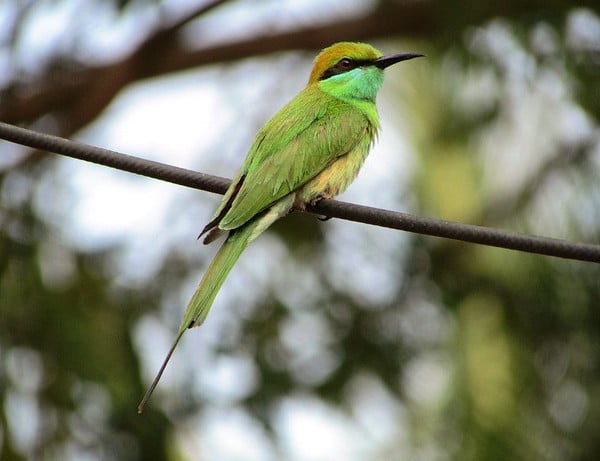
They will hit the insect rapidly on a hard surface, to remove the stings. They are solitary nesters, unlike other bee-eater species, often building nests on sandy banks.
They like open country spaces such as open woodlands, and bushveld that is close to water bodies such as rivers.
Their habitat is throughout Africa to the South of the Sahara, from Senegal, Nigeria, Sudan, Kenya, DRC, and Angola to South Africa.
The RED AND YELLOW BARBET
The red and yellow barbet is a spectacular bird with distinctive back feathers, and black with white spots.
They have red-orange heads, a black forehead, black brown tail feathers with a yellow striped underside, and blue-grey legs and feet.
They are omnivorous feeding on insects, seeds, and fruits.

They can be found in areas of dry savannah, with an abundance of termite mounds, and the terrain is broken up, avoiding densely wooded or open areas.
They can be found in East Africa from South Sudan, Kenya to Tanzania.
Are you thinking about buying binoculars to have a good look at all the magnificent birds of Africa?
Related article:
My Final Conclusion.
I hope that you enjoyed this blog post on the most common African Savanna birds, I definitely enjoyed doing the research! 😉
If you have any more questions, please feel free to ask them below in the comment section, or join me on (one) of my social media channels or Facebook group, where I share more pictures of my travels!
I wish you happy travels,
Kind regards,
Lizzy
I now have a YouTube channel as well!
YouTube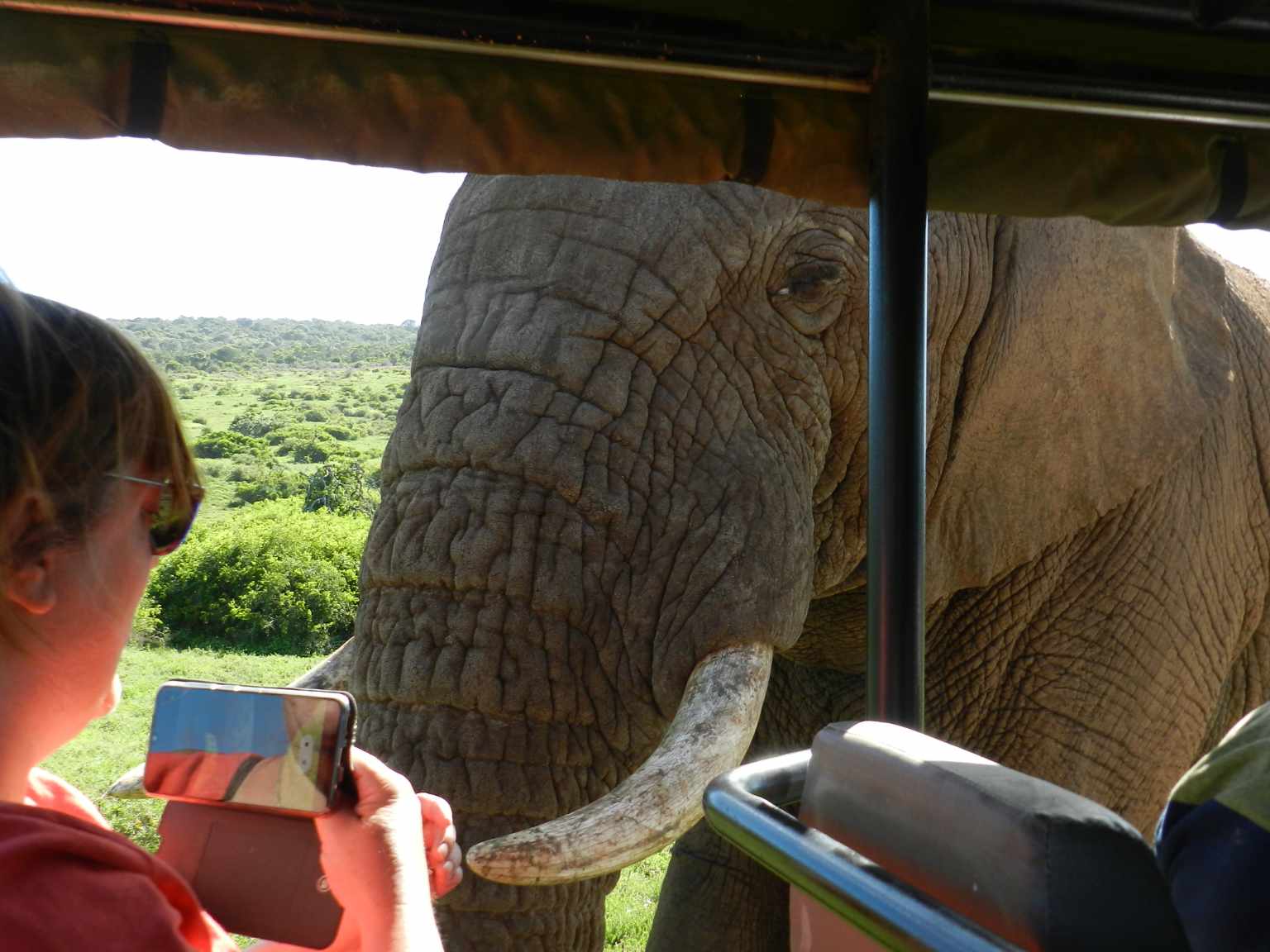
Hello Africa travellers!
Who am I? Well, the least you can say is that I am quite crazy about Africa, its nature, its climate, its culture, and more.
As a young woman in my twenties, I had already traveled to several African countries by traveling along in an overlander on my own and mostly camping ( or glamping ) and just fell in love with the diversity of it all.
So much, so that at the age of 26, I went back to university to study biology, which, unfortunately, I couldn’t finish because of health reasons (yes, I got sick from a tropical disease, oh cynicism). But this did not stop my dream of traveling back to Africa several times, and I still do.
My dream was back then to leave Europe and go study animal behavior, especially the elephants (sure, that’s every girl’s dream haha), but I am also very much intrigued by hyenas and other “ugly African animals“.
So, I “kind of” have a little bit of a scientific approach to my articles, when I write about African birds, for example. And most of all: the passion.
But life goes on, you move from one side of the country to the other, you get sick again and top it off with lower back problems, and before you know it, you are over 50 hahaha!
Now, I still travel to Africa, but take it a bit “easier” than the good old camping days, and stay in comfortable, yet affordable accommodations, together with my husband Wouter.
These are some of the countries I have traveled to: Kenya, Tanzania, Zanzibar, Malawi, Zambia, Zimbabwe, South Africa, Namibia, Botswana, Tunisia, and a little bit of Lesotho LOL .
While clearly not being African territory, but Spanish, I also visited Gran Canaria and Tenerife, and location-wise, I consider them “African”, because of their climate and nature, sue me :-p
The last trip I took was to South Africa in the year 2023, and it sure got the fevers for Africa back! From the Barberton mountains to the Drakensberg and the Southcoast, one month wasn’t enough at all to see the whole country, so we’ll be back! At ease and with a little bit more luxury than in my younger days haha!
I wish you happy travels!
Kind regards
Lizzy

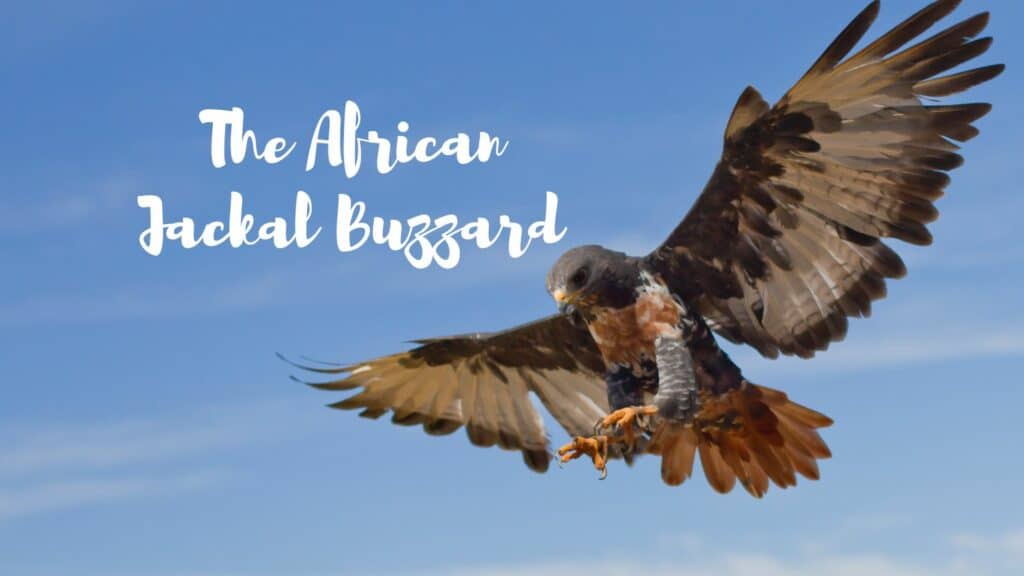
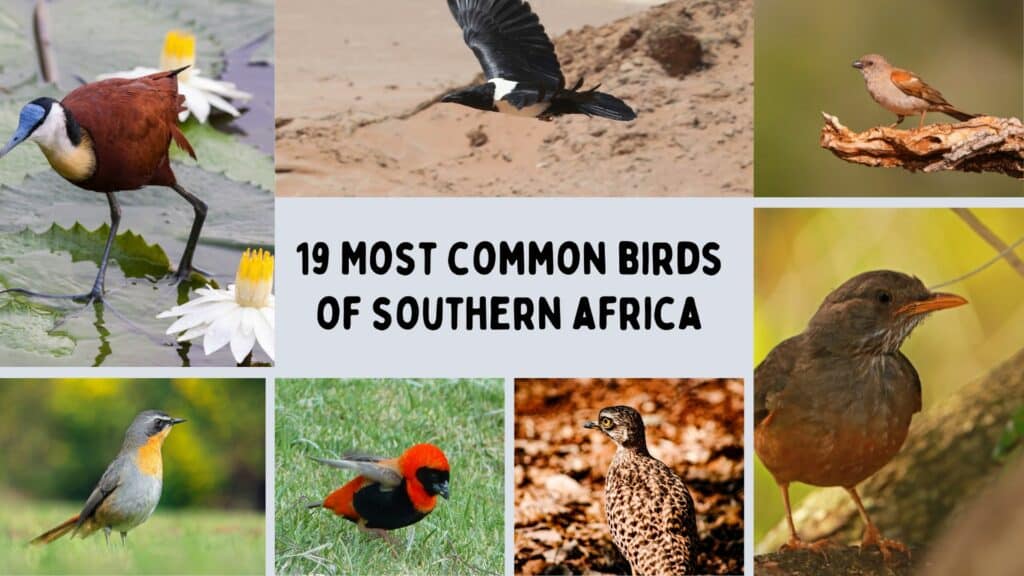
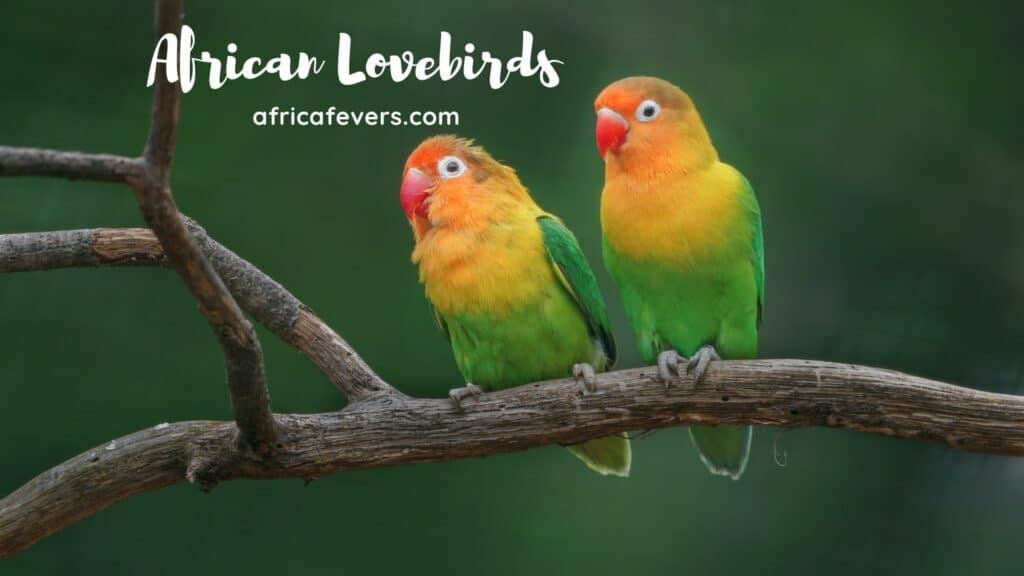
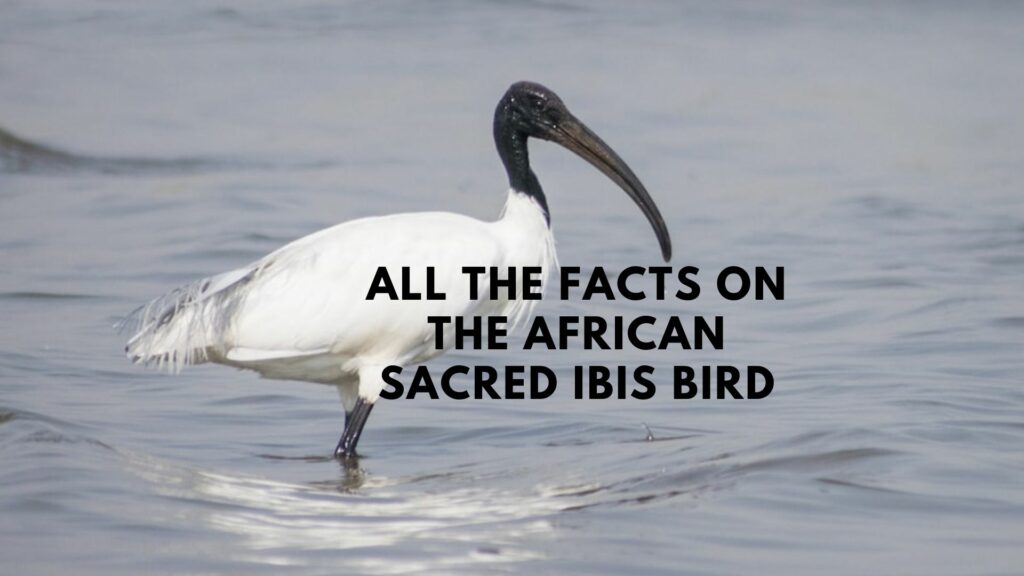
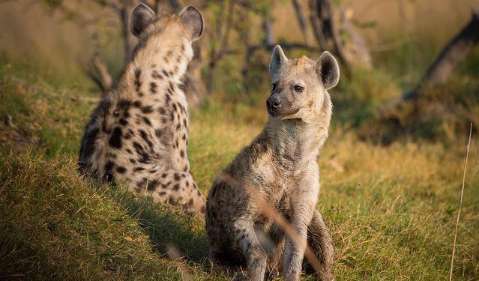
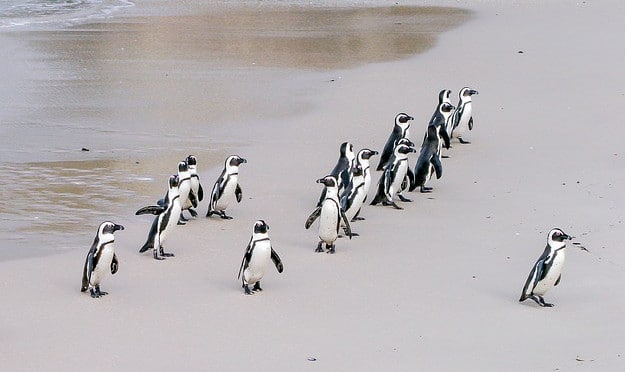
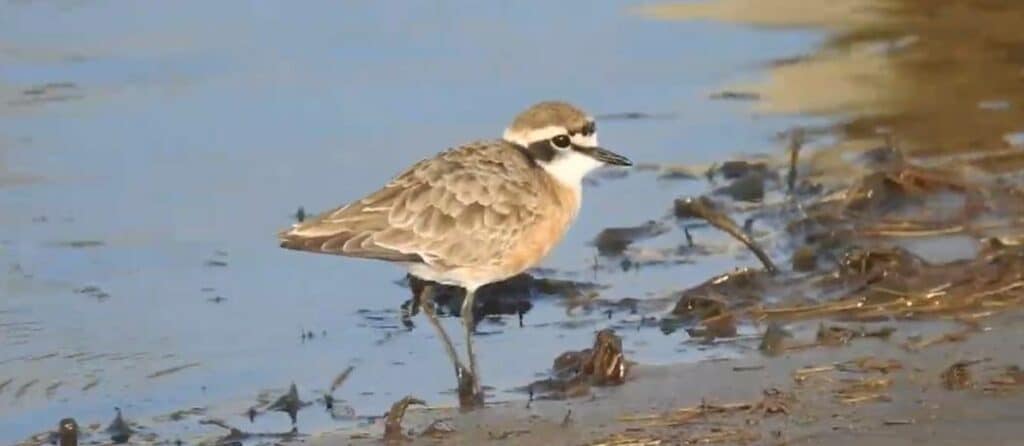

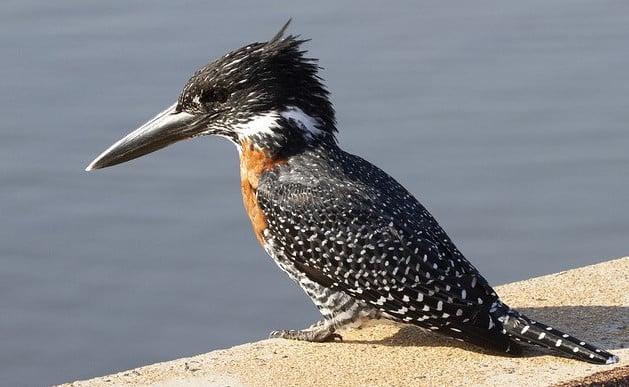
Oh my goodness. Let me start by saying, the bird on your homepage is so beautiful. I would love to go on an African safari and experience the open plains, herds of zebras, and buffalo. But the Savanna birds are incredibly beautiful. I ended up clicking on one of your links, which talks about the largest and heaviest bird in the world – the Ostrich. Omg… I am amazed at this bird. Okay, I digress. But I love your site and I will be back.
Hi Shalisha!
I hope that one day you will see all of this on an African safari, you will have a wonderful time I can assure you!;-)
Thank you for your comment,
I wish you happy travels!
Kind regards,
Lizzy